This post is a potpourri of photos from last week’s Montana trip. I’ll include shots of mammals and scenery so there will be no common theme that runs through all the images other than the trip itself. Travelogues are not my forte and some of these images aren’t of the highest quality but they illustrate some interesting behaviors that I wanted to share.
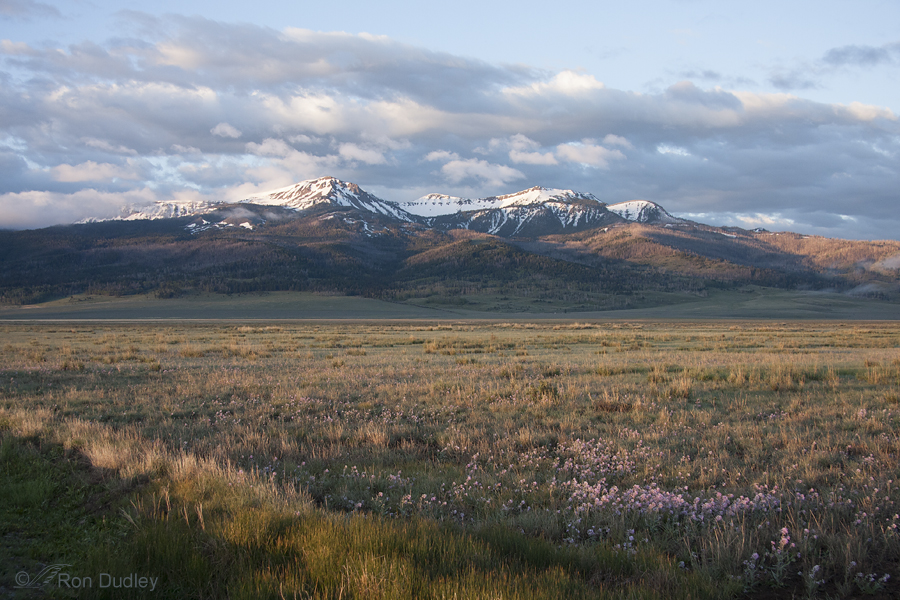 Eye candy similar to this greeted us each morning as we began the day’s journey searching for birds and other wildlife. We traveled far and wide in the western part of the state and the scenery was typically breathtaking.
Eye candy similar to this greeted us each morning as we began the day’s journey searching for birds and other wildlife. We traveled far and wide in the western part of the state and the scenery was typically breathtaking.
One morning we watched as three elk jumped one fence, crossed our dirt road and then jumped a second fence in front of us. They weren’t quite close enough for quality photos but I still liked the behavior.
I have a lot of experience with Montana ground squirrels (Richardson’s Ground Squirrel in particular) but before this trip I’d never noticed them on elevated perches. We observed them sitting high up in sagebrush like this several times. This one is almost three feet off the ground. I’m not sure of the species but they don’t seem to be communal so it may or may not have been acting as a sentry. I wanted to ask this little fella “what part of ground squirrel don’t you understand?”
But ground squirrels weren’t the only rodents I saw on elevated perches. This fat and adventuresome Yellow-bellied Marmot was belly-resting on top of an old corral post. To me this seems like strange behavior indeed.
One morning a fascinating drama played out before us involving a mixed herd of pronghorn and a single coyote. When we first observed them the pronghorn were simply watching the coyote which was very close to the herd but after a few minutes the entire herd took off after the coyote and they looked serious about causing harm to the canid. The pronghorn chased the coyote laterally to our position for several miles and though they were almost a half mile away we were able to follow them well enough to see what was going down through our lenses.
Fawning season had just begun and for obvious reasons they apparently didn’t appreciate the close presence of the coyote. In this image you can see the harried coyote running hard in the middle of the herd as the herd bears down on him/her. Eventually the herd quit chasing and the coyote ambled off.
On one of our side journeys we stumbled across this lonely gravesite in a beautiful and relatively isolated valley. Buried here is Samuel A. Glass, a soldier in the Second Cavalry who was killed in 1877 during the conflict with Chief Joseph and the Nez Pierce Indians. He had been struck in the bladder by a bullet and was mortally wounded so the soldiers left him behind to be cared for by settlers until he expired two days later.
This grave was especially poignant for me. My great-grandfather, Joseph Smith Dudley (if you’re familiar with Mormon history you’ll recognize some significance in that name) was a freighter who hauled mining supplies and dry goods in a huge wagon from Utah to the gold fields in Helena and elsewhere in Montana from 1875 to 1879. Those trips were arduous and extremely dangerous and each trip took about three months. Joseph and his contemporaries passed through this very area each time they made the journey and he had several harrowing encounters with Indians. Perhaps Joseph and Samuel even knew each other – a long shot perhaps but I couldn’t help but wonder…
One of my goals for this trip was to get some decent shots of a badger but on the morning we left Montana I’d still come up empty-handed. But after 900 miles of driving mostly dirt roads and looking for critters I spotted this badger family less than a mile before we hit the interstate highway and headed for home. The badger in the middle is an adult and the other two are “teen-agers”. I was too close for my big lens so this shot is too tight but I was still happy to get it.
I still have more bird images to post from this trip but I thought I’d throw in a little variety this time.
Ron


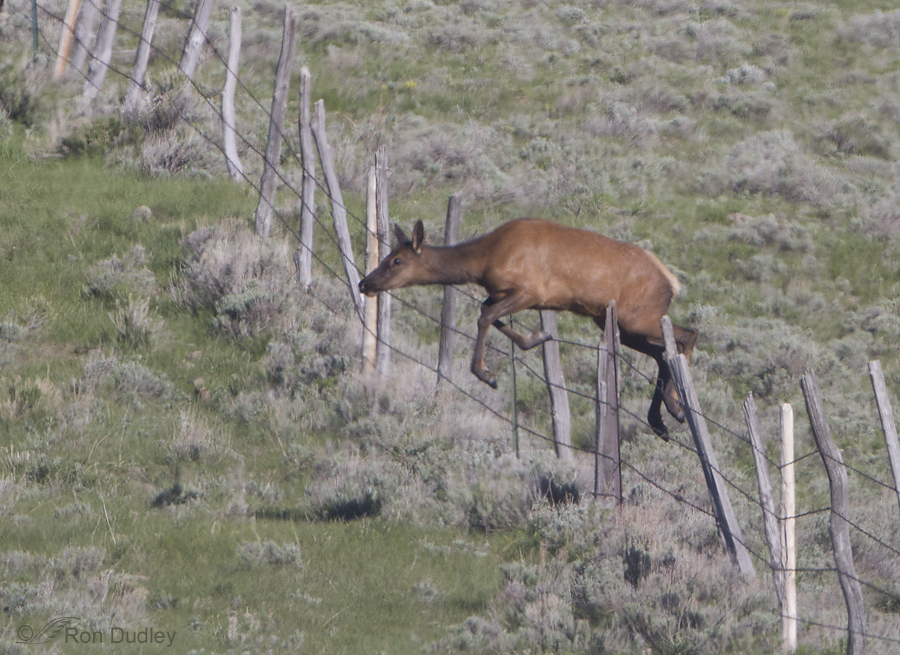
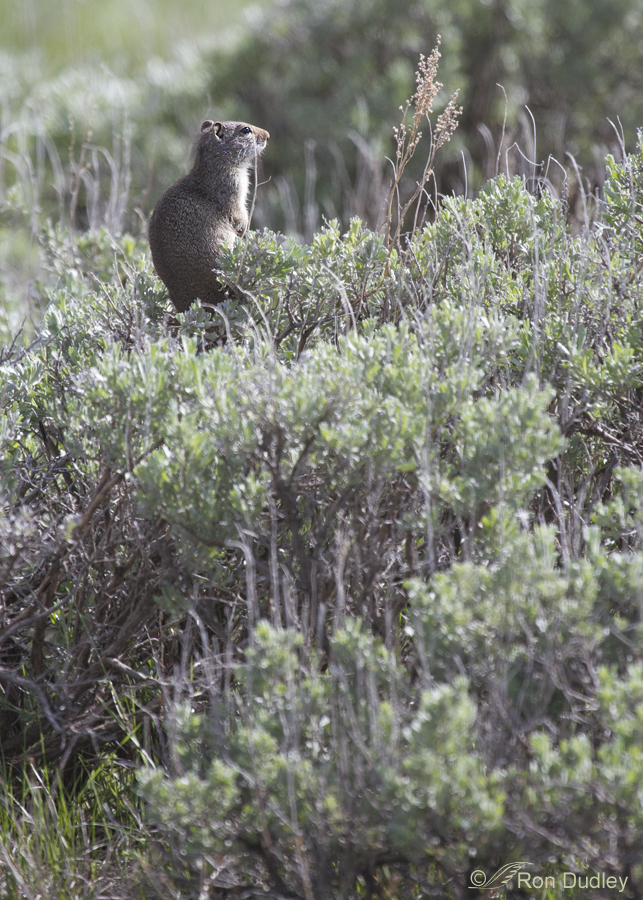
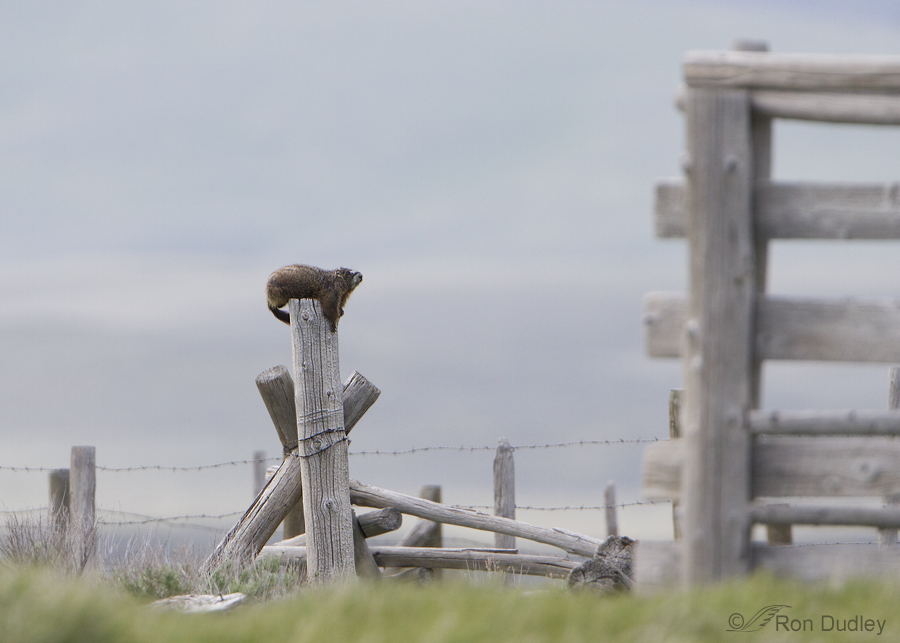
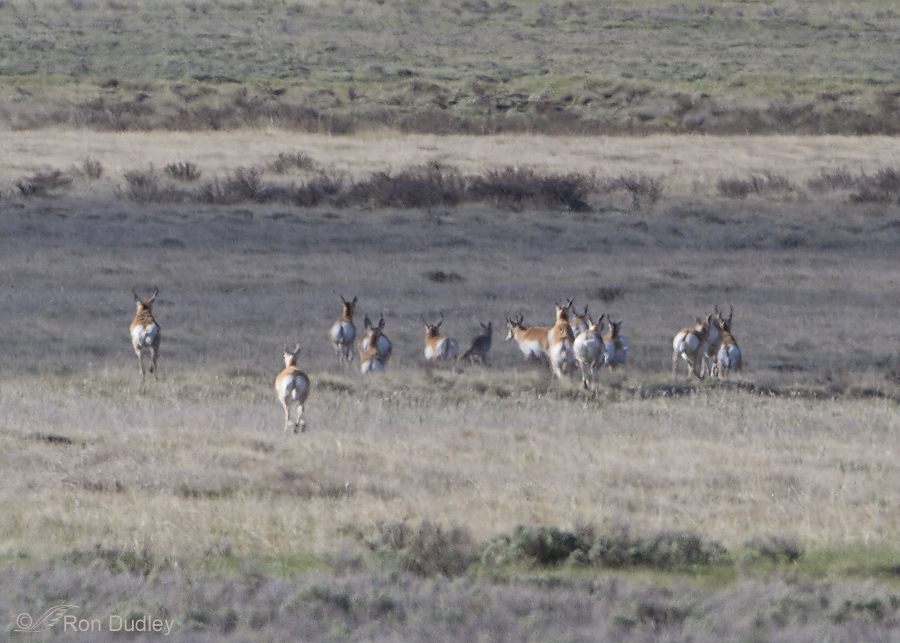
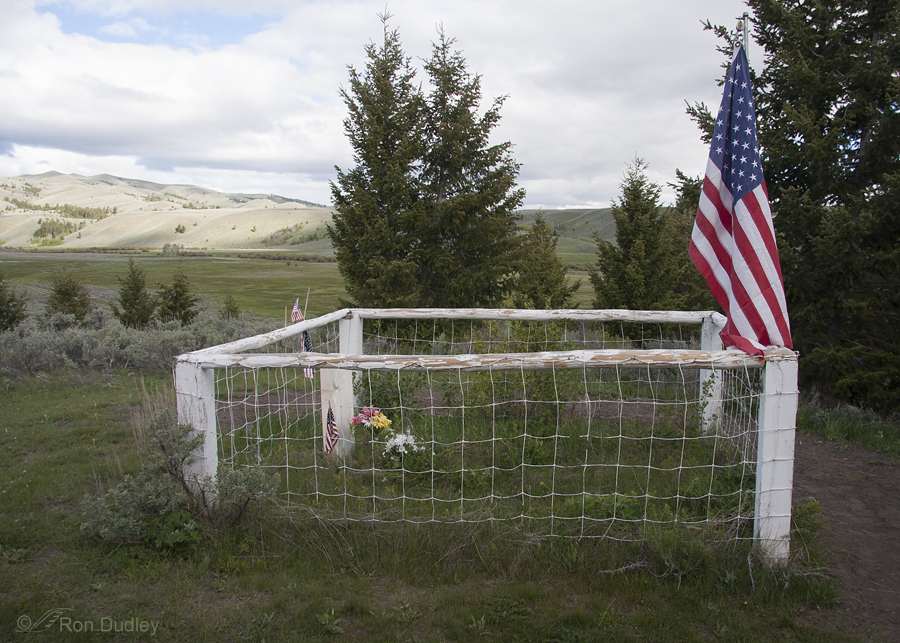
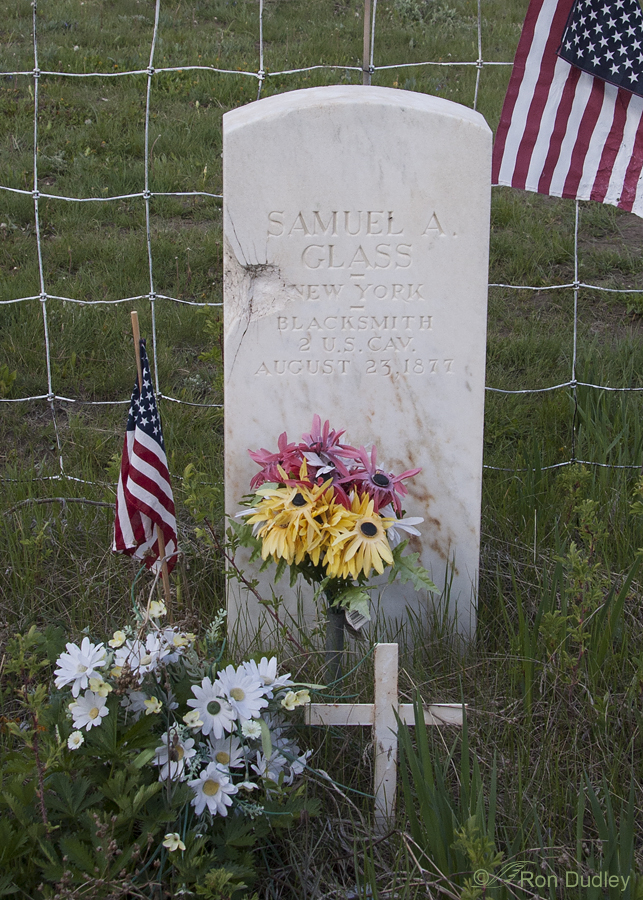
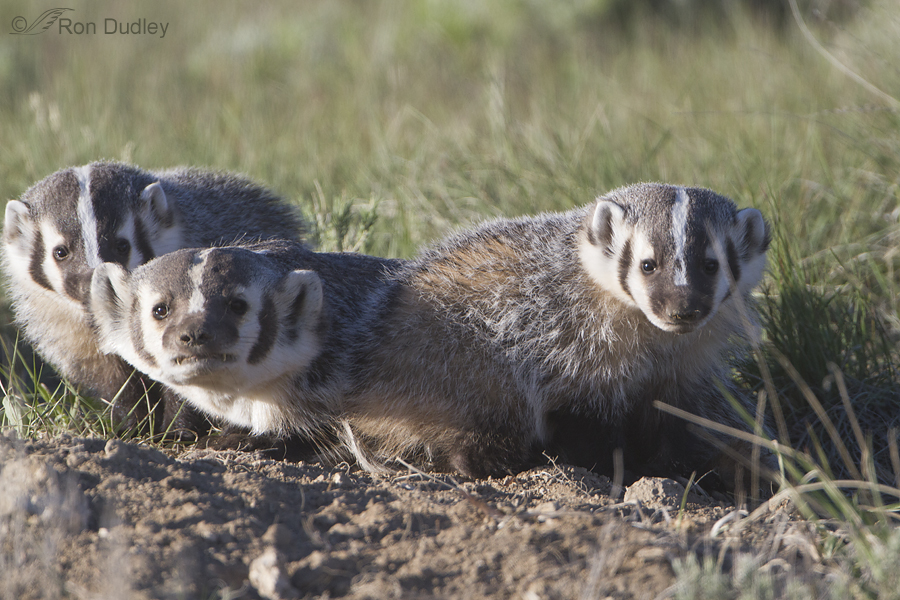
These are the facts about Private Samuel A. Glass, “L” Company, 2nd Cavalry, casualty of the American Indian War.
After the Battle of the Bighole, troops from Company L, 2nd Cavalry were sent from Fort Ellis, Montana Territory to join General Howard in the pursuit of Chief Joseph’s Nez Perce band. A few days later, the Battle of Camas Meadows occurred. The best version of the battle, as it relates to Samuel Glass was one of his fellow company L troop, Private Fred Munn:
[Fred Munn, Veteran of Frontier Experiences, Remembered the Days He Rode With Miles, Howard and Terry’, by Fred Munn as told to Robert A. Griffen. Montana the magazine of Western History, Spring 1966.]
page 60: “We joined General Howard’s command at Horse Prairie on about the 15th (August), after a killing ride from Virginia City, nearly 150 miles in something 40 hours. This was about six days after the Battle of the Big Hole in which General Gibbon was wounded in the thigh, and a number of officers killed and wounded. There is no doubt that Howard’s close proximity to the scene of the Big Hole fight caused the Nez Perce to withdraw. If they hadn’t, most likely the troops would have suffered a worse defeat.
We followed Joseph’s broad trail to the southeast and finally came up to about fifteen miles of his camp at Camas Prairie, Idaho. He was headed Tacher (Targhee) Pass and down the Yellowstone to buffalo country. Our first night at Camas Prairie the Indians struck our camp before dawn, driving off most of the horses and mules belonging to the volunteers, who were camped across Camas Creek with a small field. They went through the camp of the civilians, scattering them and their field piece, which went into the creek.
Sammy Glass and I slept under one of the freight wagons that night and when the Indians shooting and yelling struck, we jumped out with our guns in our hands, he on one side and me on the other side of the wagon. As Sammy got to his feet, he called, “Fred, they got me.” I got to him in a few minutes, propping blankets under his head. The bullet struck his belt of cartridges tearing a hole in his abdomen in which four fingers could be inserted.”
After the battle:
9/1/1877 Virginia City Madisonian:
“On the following morning, the 21st, arrangements were made for placing Glass, Trevor and Garland, the three who were the most severely wounded in Norwood’s fight of the 20th, under the medical care of Doctor E.T. Yager, and their transportation to Virginia (city) under escort of the volunteers. The company left Camas Meadows about 8 a.m., and arrived at Pleasant Valley without adventure that evening.”
“On arriving a Pleasant Valley station, Glass was found to be in such a condition from the effects of his wound that it was deemed unadviseable to carry him any further, and Dr Yager remained with him there until his death, which took place on the morning of the 23.”
“Glass was a native of New York, a man of considerable intelligence, strictly temperate in his habits, and possessed the high esteem of the officers and men of his company. He was the company blacksmith.”
“When the wagon with the wounded men arrived at Pleasant Valley Station, the proprietor, Mr. L. A. Harkness, immediately set about procuring comfortable beds for them, and assisted by two ladies who were staying there, whose names we did not learn, supplied their every want, attended to them with all possible care during the night, and when the two men , Trevor and Garland were gone, and Dr Yager and Glass remained, bestowed upon them ll the attention that kindness could suggest or the place afford, and upon the death of the latter prepared the coffin and grave, and buried him as decently as the surroundings permitted, firmly and utterly refusing all compensation for anything that had been done.”
“Such an instance of liberality and kindness is worthy of high praise, and shows the whole world kin is not always obliterated by the rugged surroundings of mountain life.”
“The volunteers arrived in Virginia City the evening on 24th.”
His grave was marked with wooden tombstone, until 1937 when it was replaced with a official government stone.
Samuel A. Glass bio info (courtesy of Mary Hocking):
1848 born about 1848 in Uxbridge, Ontario, Canada [1]. (Contrary to his enlistment papers, which say born Erie County, NY)
1858 moved to NY [2]
1860: living with his father, step-mother, and siblings in Elma, Erie County, New York. [3]
1869: enlists in the army for 5 years.
1870: living as a soldier at the US Military Post in Buffalo [4]
1874: discharged from army.
1875: boarding with John W. Mitchell, a railroad conductor, and his family in Buffalo. Glass’s occupation is painter and blacksmith. [5]
1875: re-enlists in the army.
1877: shot in the bladder during fighting with the Nez Pierce.[6]
Notes:
[1] Various census and army records. Assuming he was born in Uxbridge, Ontario, only because that’s where he was living three years later.
[2] His younger brother, George, was born in 1858/59 in New York, which means the family immigrated at some point before then.
[3] 1860 US Census
[4] 1870 US Census
[5] 1875 New York State Census and 1875 Buffalo City Directory
[6] Army records
Fascinating stuff, Dale – simply fascinating. I thank you so much for providing this information. I’ll be visiting the area again this week and I suspect I’ll stop by the grave once again and your comment will make that visit even more interesting.
Ron:
Thanks for the wonderful photos. I especially like the eye candy and the badgers. Last badger I saw was asleep in a tree in Southern Illinois.
Jack
I loved this post in its entirity. Your amazing photos, your commentary and the comments left by others. Thank you one and all.
Great shots Ron.
That first shot appearing on my computer screen was fantastic! What are those mountains I see? I will google a map of Montana. I remember seeing my first pronghorn in Southwest Saskatchewan north of Montana, very similar terrain. The rodents on the posts are so amusing, hope the marmot wasn’t stuck.And I am impressed that you got badgers, there is so much folklore about these critters..they give me a little chill.Finding those grave sites way out in the prairies is always a sombre reminder of what the early settlers went through.Makes me want to take a trip…
Much Merriment while Meandering through Miscellaneous Montana Moments.
Dave
Much as I love birds and your photographs of them, I really liked this series with other creatures as well as the scenery. Also loved the stories told by some of your readers. I love being able to encounter other people who truly love all these animals and every other living thing.
Wonderful shots and bits of history. The eye candy is really spectacular! Makes me want o get in the car and go there just to see th majestic beauty in person. Thanks so much for sharing Ron!
Chralotte
I often seen Belding ground squirrels on fence posts in Central and Eastern Oregon – but never a marmot! Great shots, Ron. Badgers are a particular fascination of mine, since I had the honor of raising one some years back. Mom had been killed carrying the baby across a road; though the State Police searched for the den or dens (they often move the young to a new den site) they never found more … I got him when his eyes were just opening until I released him – and got to watch him dig his first hole! Like an animated piece of carpet, so wide with such short legs. LOVED that guy.
I’ve also witnessed amazing ‘herd’ plotting against a predator – this time a flock of peacocks! I had brought some raptors to a site for a program and the resident peacocks took exception. They advanced en masse as I was bringing a falcon from the car; got shooed off; divided in half and came back around both side of the building; were shooed off; then divided into three battalions, two came around the building and one group came over the roof! We moved the program inside … but I was awed at their strategic planning. The biologist with me was equally wowed. Who knew?!
I always enjoy reading about your experiences when you comment, Louise and I’m sure my readers do also. That story about the peacocks and raptors is amazing.
Ron,
Enjoyed your post and am looking forward to more. I just returned last night from my own trip through that part of the world. I first visited it 49 years ago and it’s still one of my favorite places.
I hope you enjoyed your trip up there as much as I did, John. I’m sure I’ll be returning soon…
Much as I love our grey rocks, green hills, ferns and moss, our mighty Hudson river with its palisades, the adirondacks, our many lakes and waterfalls(from mere trickles to Niagra), and our canopies of tall trees in an amazing variety, boy, do I miss the morning smell of sage brush in all it’s grey-green glory, wide open space and BIG SKY!!! You’ve shared some curious behaviors (tree/post climbing marmots), not one protective pronghorn but a whole herd of vigiilantes, a high jumper clearing that damned barbed wire and some very touching scenes. Badger babies and adult were a great ending. Thanks for the trip!
Yes, there’s nothing like the morning smell of sagebrush, Patty. Especially when it’s wet. Occasionally when I’m on the side of the road I run over a sagebrush branch with my tire and that wonderful aroma immediately wafts up into my truck. I love it!
Hi, Ron! Some years ago, I lived on a large ranch in Eastern New Mexico, Pronghorn country. At that time, my herding dog and I ran daily on the ranch roads. When we came in sight of a herd with young, the antelope did something fascinating. As we came nearer, an adult “volunteer” would break from the herd and trot out in front of the dog. Since it was running, the dog would give chase. The antelope loped in front of the dog, just fast enough to make the dog run flat out. He/she led the dog on a merry chase in a huge loop, eventually returning to the herd. At that point, another antelope would trot out to lead the dog away again, while the rest of the herd peaceably grazed on. The relay team continued until the dog was completely exhausted, gave up and limped back to my side. She fell for it every single time. She was not actually hunting, never any danger to an antelope. Nevertheless, I was amazed at their understanding of canid behavior and cooperatively dealt with her presence with minimal exertion.
Thank you so much for sharing your work!
Mikal
That’s fascinating Pronghorn behavior you described, Mikal. Thank you for sharing your experience with them.
Ron, which lens lens did you use for the first landscape?
Maria, I used the Canon 17-85 for that shot.
Lovely. Thank you!
And thank you, Sharon.
What can I say? A beautiful part of our country exposed in an absorbing collection of photos. Thanks, Ron, for these wonderful views of Montana and some of its animal inhabitants. I especially appreciate your narrative which, to me, adds more life to each photo.
Thanks for the feedback on the narrative, Dwynn. Always appreciated.
Thank you. I like the variety, being a stranger to “wild west” animals.
I’m glad you enjoyed seeing our western critters, Diane.
…loved the tour Ron! The gravesite for Samuel A. Glass and how it is cared for is very poignant!
Thank you, Nancy.